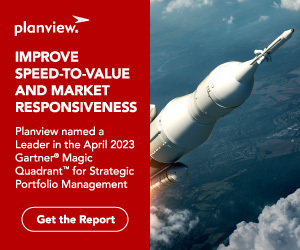 “Hey Percy, what happened to the two medical writers who were supposed to start work with us this week?”
“Hey Percy, what happened to the two medical writers who were supposed to start work with us this week?”
“Oh, you didn’t hear, Luke? They were pulled to work on project PDE_311 at the last minute.”
“Ugh, just like the bio-statistician that we were supposed to have last month!” said an exasperated Luke.
“That’s the law of the jungle, right?” Percy returned. “PDE_311 is the top-priority project, and we are out-of-sight and out-of-mind.”
“So, what did it mean back in June when our project was ‘funded’, anyway? We never seem to get the resources we request, and you KNOW they’ll be all over us when we slip our deliverable dates…”
This company is making a critical resource planning mistake; have you experienced it yourself?
Prioritization is an essential part of R&D. If you prioritize everything, in reality, you are prioritizing nothing. But even companies who clearly and decisively prioritize don’t properly operationalize their priorities. Lower priority projects are funded, but then starved for resources because the highest priority projects sign their own checks, and obtain resources above and beyond what was originally promised. After all, they are the companies top priority.
Just like that, a King Kong project is born. King Kong projects can ask for resources at the 11th hour, and expect to receive them. King Kong projects are never questioned, or allowed to stall or wait. They become a lightning rod for fears about the fate of the company, and denying the request of a King Kong project team is tantamount to undermining the entire companies’ future.
But for every King Kong project, there are dozens of other projects whose resources are pulled at the last minute, and whose critical path activities are slipping, week after week. The King Kong project may succeed or fail as it pulls resources from far and wide, but these other projects are definitely the worse for wear. They are slowly (or not so slowly) being starved and losing critical momentum.
To make matters worse, staff gravitate to King Kong projects because they are where the action is, and no one wants to be left out, working on the less popular and less visible initiatives.
Smaller companies might need a bet-the-farm mindset, and thus justify their King Kong project (in fact, it may be their only project of any importance). But larger firms with King Kong projects are losing the risk-minimizing benefits of their portfolio by funding one project above all others. King Kong projects are also seldom viewed critically, even when goalposts have shifted and the project’s outlook has dimmed.
Taming King Kong
How do you break the cycle? A top-priority project shouldn’t have all activities funded over all other projects. Critical path activities for all funded projects take priority over non-critical path activities, even for the top-priority project.
Successful companies count on initiating all critical path activities for funded projects. With all projects progressing on their critical paths, additional resources are allocated to non-critical path activities for the highest priority projects. As project work continues, new activities become critical path, and these receive the next set of available resources.
There are a few caveats to this deceptively simple rule: First, don’t load up your portfolio with only critical path activities. Sooner or later, everything you ignore will become critical path, so paying attention to only the current critical path is a road to over-commitment.
Second, funding all critical path activities requires your project management house to be in order:
Understand the critical path activities of each project under consideration. This requires an up-to-date project plan for each initiative, and a common template of activities/work packages in general use among project teams.
Track constrained resources that are most in-demand across projects. You needn’t track every individual separately, or even every role. But those roles most needed for critical path activities must be estimated over the course of each project. Track this information initially by month, and only add more granular detail if bottlenecks can’t be resolved at the monthly level.
Watch for scope creep. Top-priority projects should not get a pass when it comes to overruns and scope creep. If the critical path requires substantially more resources, decide if the fit and viability of the entire project should be reviewed, before the request is granted.
Have you worked on, or been the victim of, a King Kong project? Was the project the savior of the firm, or the source of a slow decline by a thousand cuts? If your company avoids the King Kong project trap, what’s your secret?
More posts:




